Most popular bonsai trees
8 Most Popular Bonsai Trees
June 11, 2019
Not all bonsai trees are created equal! There are just some bonsai trees that are more beautiful and better to care for. The reason being bonsai trees are cultivated to resemble miniature versions of larger trees. Most perennial woody-stemmed trees or shrub species can be grown and artfully formed into bonsai trees. The best characteristics of well-forming bonsais have small leaves and needles. Once sprouted, the bonsai trees will grow to fit their environment. Choose the best bonsai trees to care for from seedlings to natural, fully grown trees.
Jacaranda Mimosifolia - Brazilian Rosewood
This flowering tree is native to south-central South America. It is a subtropical plant characterized by its luscious blue and lavender colored flowers. Their green leaves are compound and fern-like. Their branches are zig-zag and slender.
Pinus Aristata - Bristlecone Pine
Pines are among the most popular bonsai trees because of their ease to shape in a variety of styles. They are long-lasting evergreen trees that keep their needles up to 40 years on fully grown pines. They are native to New Mexico and Colorado in the U.S. Their name refers to their formation. Beautiful clusters of pine needles with bristles on their cones.
Delonix Regia - Flame Tree
Similar to the Jacaranda, this is another brightly colored tree. The name refers to its vibrant red and golden hued flowers. It is a tropical tree from the legume family. It thrives in tropical and subtropical climates. The bark twists, the leaves are fern-like and its canopy takes on a natural umbrella shape.
Picea Mariana - Black Spruce
Native to the northern hemisphere, this is another type of coniferous evergreen tree. Unlike the pine, they are spruces.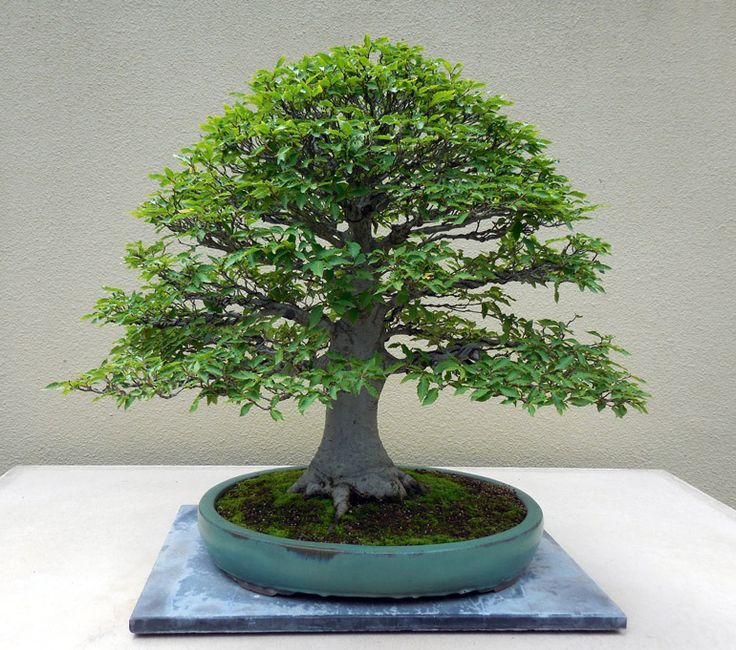 Therefore, they are more difficult to shape but equally as beautiful. Their leaves are green and needle-shaped. The branches grow whorled and its canopy is a conical shape.
Therefore, they are more difficult to shape but equally as beautiful. Their leaves are green and needle-shaped. The branches grow whorled and its canopy is a conical shape.
Ficus Religiosa - Buddha Tree
This is a great beginner bonsai tree. It is a semi-evergreen fig tree, part of the mulberry family. It’s name derives from the ancient story of the buddha who attained enlightenment meditating underneath this type of tree. They are native to the Indian subcontinent and southeast Asia. They prefer tropical climates but can be grown in a variety of climates. The leaves are green with a heart shape and drip tip.
Pinus Thunbergii - Japanese Black Pine
Like the Bristlecone Pine, these are easy to shape in a variety of different bonsai styles. They are a variety of coniferous evergreen pine trees. Their needles grow in clusters of two. They are strong, long and dark green needles, native to Japan and grow by the sea.
Pinus Densiflora - Japanese Red Pine
Similar to Japanese Black Pines, these are coniferous evergreens pine trees.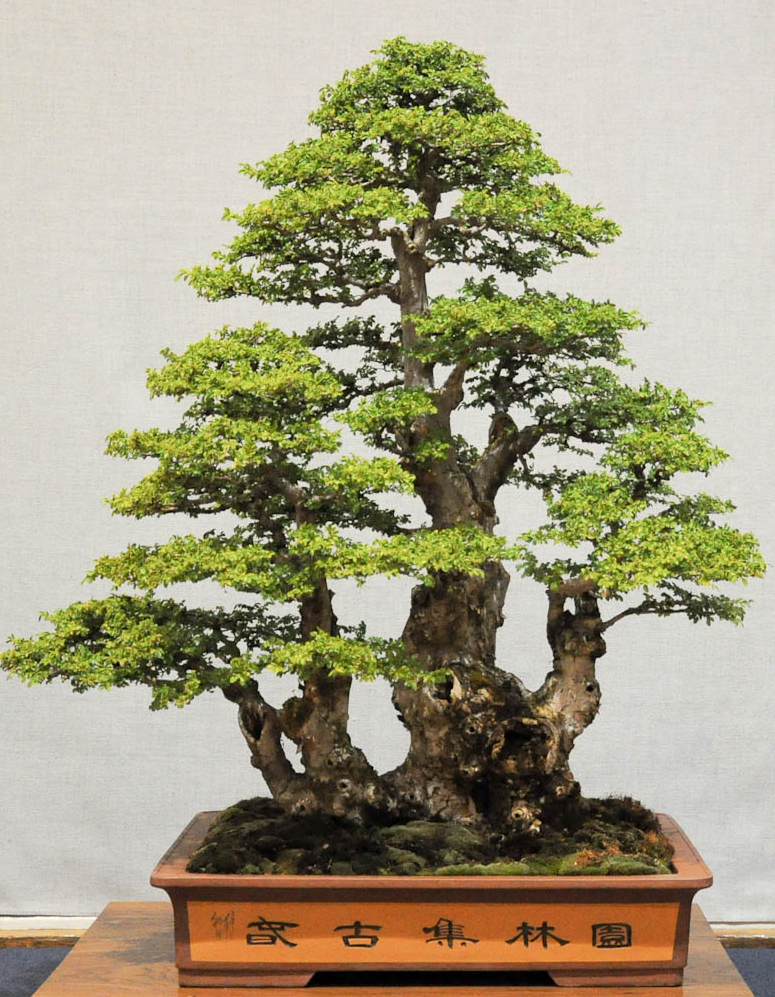 Unlike, the Black Pines, they are delicate and slender. Their needles are thinner and softer. They are native to Japan but grow a little further away from the sea.
Unlike, the Black Pines, they are delicate and slender. Their needles are thinner and softer. They are native to Japan but grow a little further away from the sea.
Metasequoia Glyptostroboides - Dawn Redwood
They were first discovered in China but exist all around the world. They are strong and tall trees. They have light green leaves and needle-shaped leaves. They can grow very rapidly.
These species of bonsai trees are perfect for beginners, moderate to advancement bonsai caretakers. They do well in both indoor and outdoor settings with the proper care and maintenance. Growing these spectacular bonsai trees from start to finish will be a fun and fulfilling experience!
Featured Products:
| Garden Republic Non-GMO Bonsai Trees Heirloom Seeds 8 Count |
Also in Blog
10 Tips for Beginning Vegetable Gardeners
September 08, 2021
Continue Reading
Coming Soon! - Garden Republic Jr.
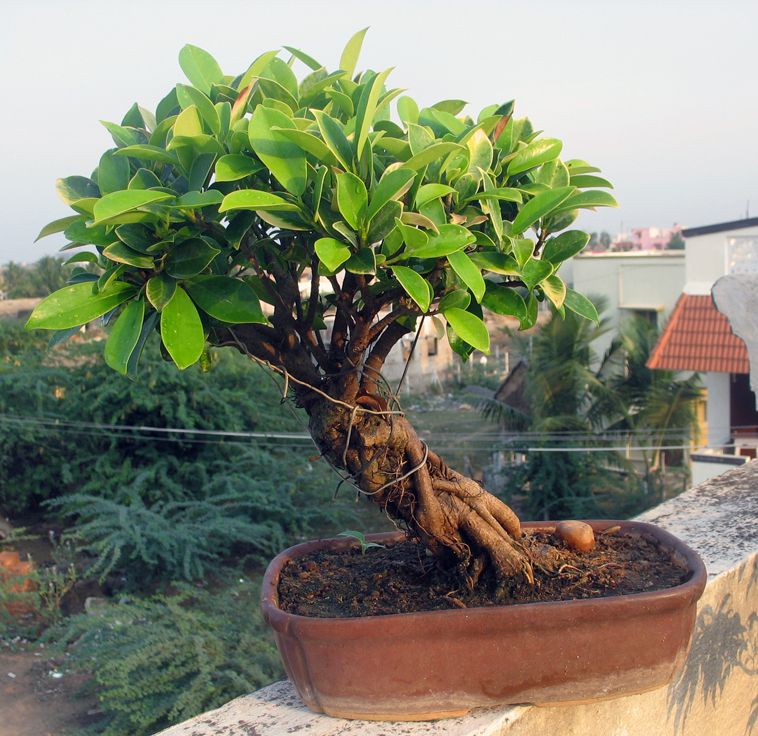
September 02, 2021
Continue Reading
Tips for Building Healthy Garden Soil
August 27, 2021
Continue Reading
16 Common Bonsai Tree Species to Grow
These types of bonsai trees are best for training into different shapes at home
By
Cori Sears
Cori Sears
Cori Sears specializes in home decor and houseplants. For more than 10 years, she's been on a mission to transform her urban apartment into an indoor jungle. She's been a contributing writer for The Spruce since 2019.
Learn more about The Spruce's Editorial Process
Updated on 08/23/22
Reviewed by
Kathleen Miller
Reviewed by Kathleen Miller
Kathleen Miller is a highly-regarded Master Gardener and Horticulturist who shares her knowledge of sustainable living, organic gardening, farming, and landscape design.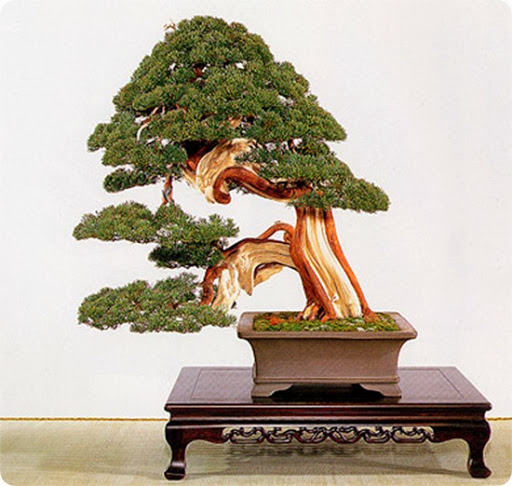 She founded Gaia's Farm and Gardens, a working sustainable permaculture farm, and writes for Gaia Grows, a local newspaper column. She has over 30 years of experience in gardening and sustainable farming.
She founded Gaia's Farm and Gardens, a working sustainable permaculture farm, and writes for Gaia Grows, a local newspaper column. She has over 30 years of experience in gardening and sustainable farming.
Learn more about The Spruce's Review Board
The Spruce / Evgeniya Vlasova
Bonsai is an ancient living art form that utilizes growing and training techniques to produce miniature trees that mimic the appearance of their full-sized counterparts. These techniques include heavy crown pruning, root pruning, and root confinement in shallow containers.
Nearly any perennial, woody-stemmed tree or shrub that produces true branches can be trained as a bonsai tree. However, some species are more well-suited to growing as bonsai than others. Some bonsai tree species are more popular due to aesthetic reasons (such as having small foliage or gnarled-looking bark), while others are popular because they are notorious for being low-maintenance and resilient when grown as miniatures.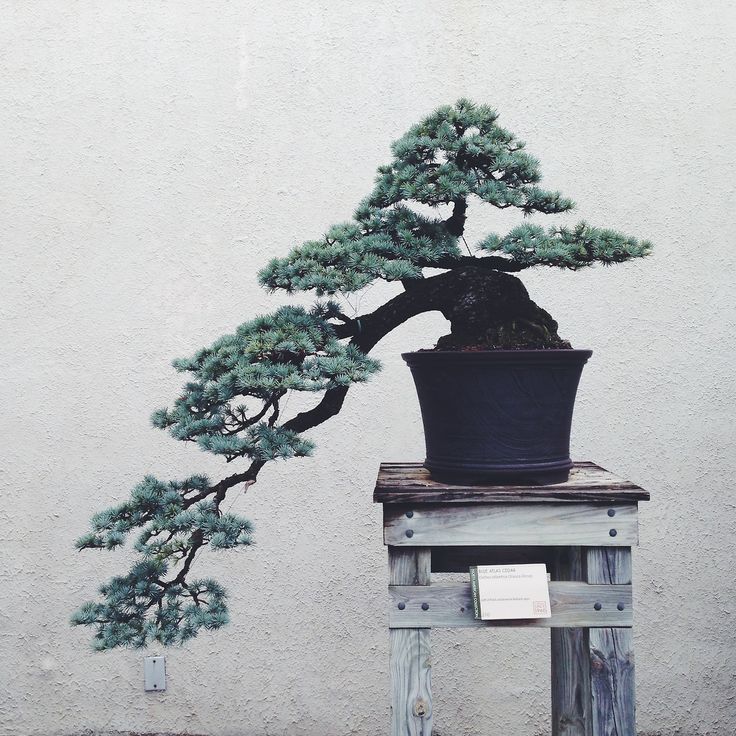
Bonsai Tree Species for Beginners
If you are just getting started growing and training bonsai, you may prefer to work with varieties that are easiest to train. Here are common bonsai tree species for beginners:
- Juniper: Tolerates heavy pruning and is ideal for learning wiring techniques
- Ficus: One of the most common indoor bonsai tree types and best if you're not consistent with watering
- Japanese red maple: Affordable tree that tolerates pruning mistakes of novice bonsai artists, but you'll need to remember to water it
- Chinese elm: Great for learning pruning techniques; thrives indoors or outdoors
There are many types of species you can try out to create bonsai trees. Read on to find out more about the four species above for beginners and other popular flowering and non-flowering tree and shrub varieties that make good bonsai specimens.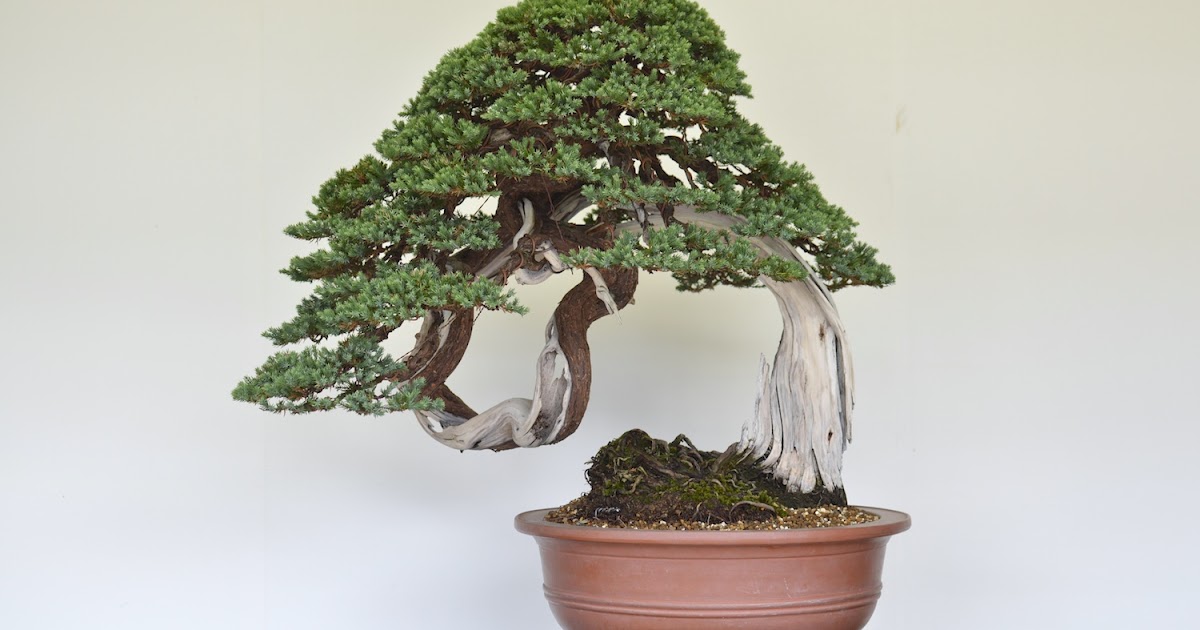
Tip
Nearly any tree variety grown as a bonsai will grow best in a special potting mix that is usually marketed as a bonsai soil mix. This mix is really not a soil at all, but rather a mixture of hard Japanese akadama (a claylike mineral), pumice, and black lava, sometimes with some horticultural additives included.
Bonsai Tree Plants and Feng Shui
-
01 of 16
Loren Klein / Getty Images
Juniperus is a large genus of over 50 evergreen coniferous trees and shrubs that are popular as bonsai trees. All species of juniper can be successfully grown as bonsai.
Junipers are popular as bonsai for two main reasons. First, the small foliage fits nicely with the miniature aesthetic of bonsai; and second, junipers are hardy trees that can withstand aggressive pruning.
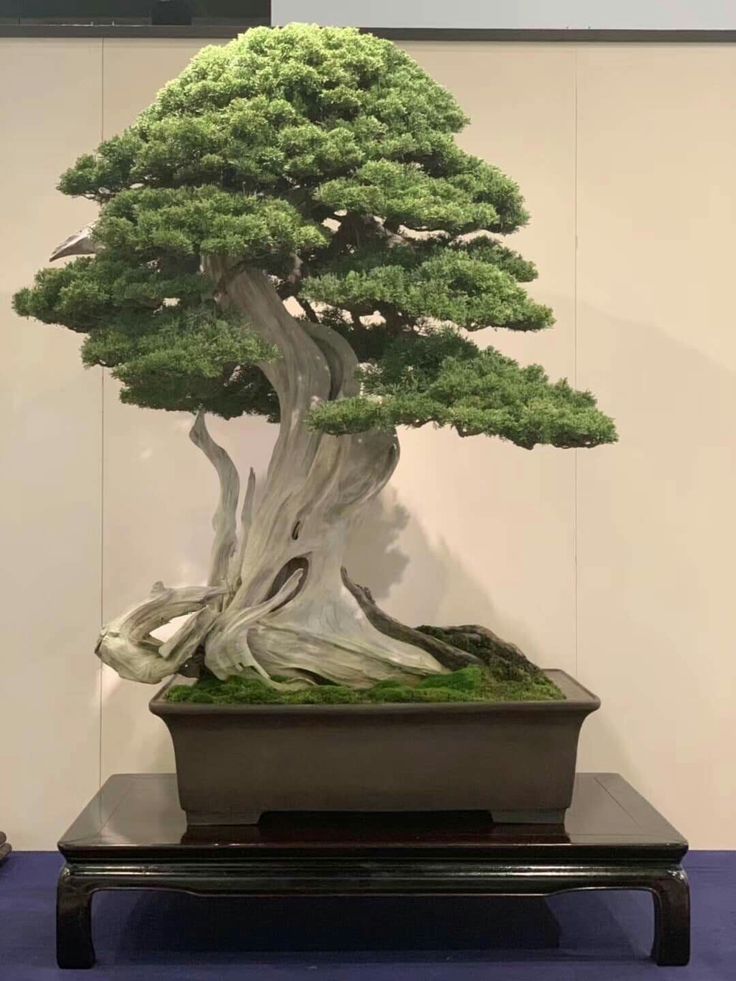 Juniper bonsai trees do not do well when grown indoors, and they must be planted in dry soil.
Juniper bonsai trees do not do well when grown indoors, and they must be planted in dry soil. - Light: Bright, sunny light
- Water: Allow soil to dry slightly before watering
- Color Varieties: Needles can be yellow, pale green, or dark green (depends on species)
-
02 of 16
3000ad / Getty Images
Pine trees are popular as bonsai because they are hardy and trainable. In fact, pine trees can be shaped into almost every known bonsai style. Pine trees are characterized by needles that appear in bundles of two to five, and bark that becomes scaly or flaky as it ages. Species that are particularly good for bonsai include Japanese black pine (Pinus thunbergii), mountain pine (P. mugo), Scots pine (P. sylvestris), and Japanese white pine (P. parviflora).
- Light: Full sun
- Water: Water when the soil looks dry
- Color Varieties: Needles range from light green to bluish green to dark green (depends on species)
-
03 of 16
Aleroy4 / Getty Images
Japanese maples are deciduous hardwood trees famous for red-burgundy or green leaves that turn bright red, orange, or yellow in fall.
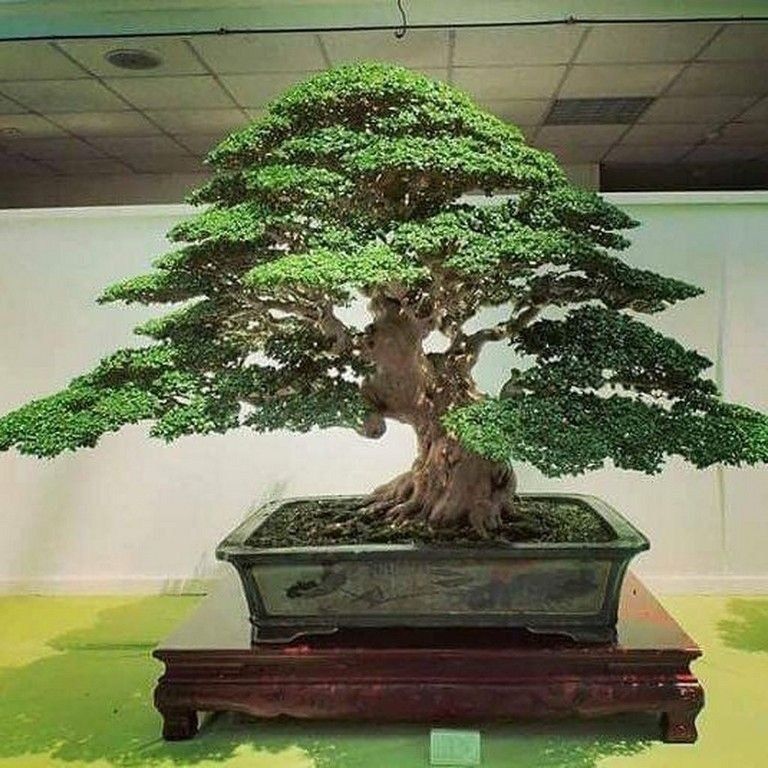 The bark of young Japanese maples is typically green or reddish, turning grey or grayish-brown as it ages.
The bark of young Japanese maples is typically green or reddish, turning grey or grayish-brown as it ages. A warning to those bonsai enthusiasts who don’t have a lot of time to dedicate to the craft—Japanese maples require a lot of water, especially during the growing season. Depending on the temperature, they may require daily watering, possibly even several times daily.
- Light: Sunny, partial sun
- Water: Requires frequent watering (daily or more)
- Color Varieties: Some varieties have red or yellow leaves from spring to fall, while others are reddish in spring, turn green in summer, then transform into brilliant reds, yellows, or oranges in fall.
-
04 of 16
Carlo A / Getty Images
Cherry trees are traditionally believed to signify friendship, and varieties such as the Japanese flowering cherry also make beautiful bonsai trees. These ornamental, deciduous trees are not only gorgeous, but they are easy to train because their branches and trunks are pliable and easy to shape.
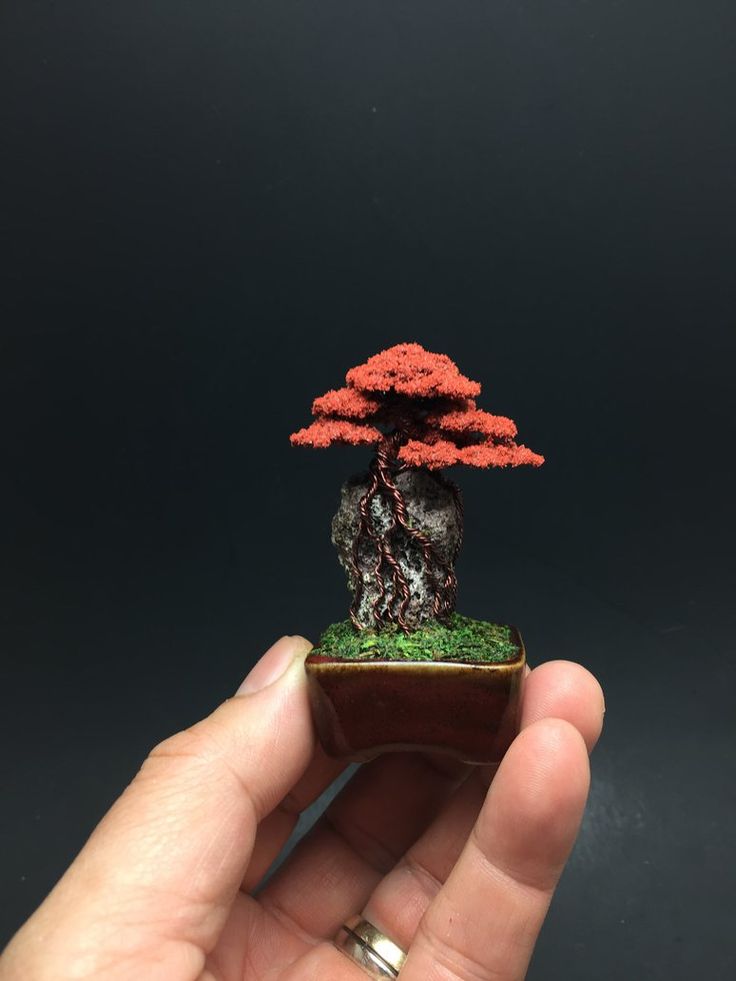
While bonsai cherry trees can be grown indoors, they may suffer from a lack of light and grow best when grown outdoors in the summer months.
- Light: Full sun
- Water: Keep the soil consistently moist.
- Color Varieties: Foliage is green or bronze; flowers can be various shades of white or pink.
-
05 of 16
Cliff / Flickr / CC BY 2.0
The rough, ragged bark of cedar trees has made them a popular choice among bonsai enthusiasts. Cedar trees are evergreen conifers that grow short needle clusters along their branches, providing an opportunity for very dramatic bonsai styles. Impressive drama aside, cedars are not ideal for beginners. Cedar bonsai trees require specialized care and expertise to grow properly as bonsai and are best-suited for experienced growers.
There are four cedar species frequently grown as bonsai: cedar of Lebanon (Cedrus libania), Cyprus cedar (Cedrus brevifolia), Himalayan cedar (Cedrus deodara), and Atlas cedar (Cedrus atlantica).

- Light: Direct sun
- Water: Allow the soil to partially dry between waterings
- Color Variations: Dark green needles
-
06 of 16
Bulgnn / Getty Images
Ginseng ficus is a tropical bonsai tree species. However, it's considered to be an excellent species for beginner bonsai enthusiasts because it is a very hardy and forgiving tree. These broadleaf evergreen trees are characterized by unique-looking aerial roots and oval-shaped dark green leaves.
Ginseng ficus makes a low-maintenance bonsai tree, and it doesn't require as much light as other popular bonsai varieties. It grows well indoors as a houseplant since it thrives in warm climates and bright, indirect light.
- Light: Bright, indirect light
- Water: Keep soil moist
- Color Varieties: Glossy green foliage and light brown bark
-
07 of 16
Photohomepage / Getty Imges
The beautiful, umbrella-like canopy of the weeping fig makes it a popular choice for bonsai.
 Its twisted surface roots are another alluring feature that lends well to bonsai styling.
Its twisted surface roots are another alluring feature that lends well to bonsai styling. Besides its appearance, Ficus benjamina is a hardy, resilient tree making it perfect for bonsai training. It adapts well to growing indoors and is often grown as a houseplant year-round.
- Light: Part sun
- Water: Water frequently
- Color Varieties: Glossy green leaves and light-brown bark
-
08 of 16
/ Getty Images
The dwarf jade plant is a semi-evergreen softwood shrub that makes an excellent bonsai tree for beginners. Dwarf jades look very similar to the more common jade variety (Crassula ovata), however, the smaller foliage of the dwarf jade makes it the preferable choice for bonsai growing.
Dwarf jade bonsai trees grow well indoors but need direct sunlight for most of the day. They can also be successfully grown outside but cannot tolerate freezing temperatures.
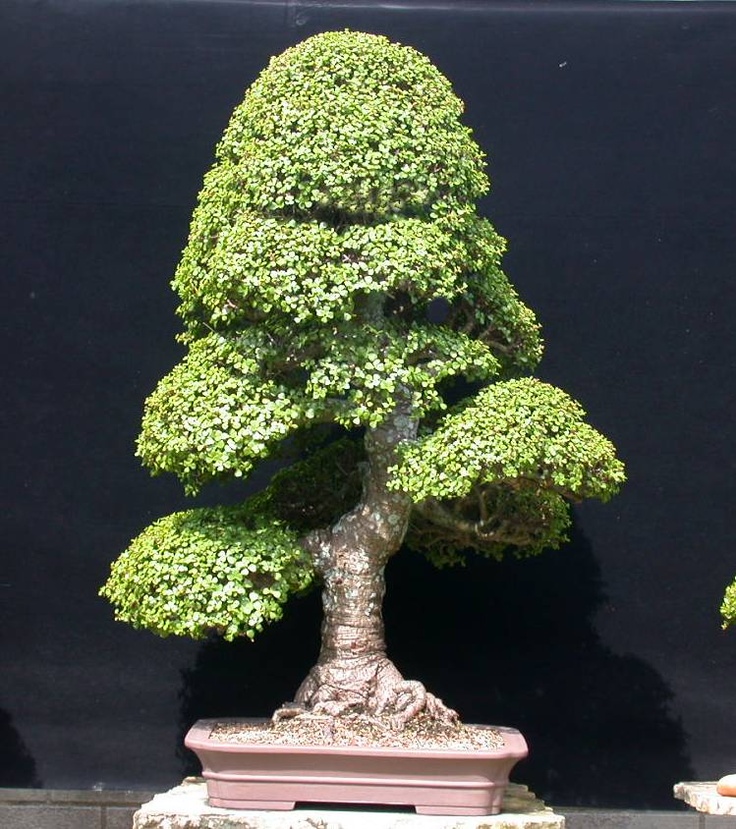
- Light: Direct light
- Water: Water sparsely
- Color Varieties: Dark green succulent leaves, light brown branches
-
09 of 16
SharonCobo / Getty Images
The thick, knotted bark and striking, fruit-bearing flowers of the pomegranate tree have made it a popular type of bonsai tree. Its naturally gnarled, ancient appearance is perfect for the bonsai aesthetic.
Pomegranate bonsai trees can be grown outdoors year-round in warm climates, or grown indoors for part of the year. They should be protected from freezing temperatures and frost.
- Light: Bright direct light
- Water: Water regularly
- Color Varieties: Glossy green leaves; may flower with orange-red blooms that produce edible fruit
-
10 of 16
MarcBruxelle / Getty Images
Dwarf boxwoods are popular shrubs and they also are good choices for bonsai plants since they respond well to pruning.

One type of dwarf boxwood, the littleleaf boxwood (Buxus microphylla), also known as 'Kingsville Dwarf', grows 12 to 18 inches high, perfect for bonsai and miniature gardens. Harland boxwood (Buxus harlandii) is another good shrub for a bonsai, but it can grow a little taller, to 2 to 3 feet if not pruned. Yet another dwarf boxwood variety is the Korean (Buxus sinica var. insularis) with a height of 2 feet.
- Light: Full sun to partial shade
- Water: Somewhat drought-tolerant; let dry slightly between waterings
- Color varieties: Small, rounded, glossy, or leathery green leaves and insignificant green or yellow flowers
-
11 of 16
DebraLee Wiseberg / Getty Images
Azaleas are flowering shrubs, but some miniature versions, typically referred to as "greenhouse azaleas," are meant to be houseplants. Dwarf varieties can grow just shy of 3 feet tall.

One particular azalea, Satsuki (Rhododendron indicum), is ideal for bonsai but it's also considered strictly an outdoor flowering plant. Without pruning it can grow several feet tall, but with pruning it is a lovely foot or so high with pink springtime blooms.
- Light: Full sun to partial shade; dappled shade
- Water: Frequent watering
- Color varieties: White, pink, red, orange, peach blooms
-
12 of 16
TraceyAPhotos / Getty Images
The Chinese elm, also known as lacebark elm, is a popular choice for those beginning bonsai since the tree is easy to grow indoors or outdoors though it needs heavy pruning. It has a rounded shape and its distinctive multi-colored bark in shades of brown, gray, green, and orange exfoliates for visual interest. A Chinese elm bonsai will stay around 10 inches to 2 feet tall.
- Light: Full sun
- Water: Drought tolerant, but needs less frequent and deeper waterings
- Color varieties: Small green leaves, insignificant blooms, and exfoliating light and grey bark
-
13 of 16
Daderot / Wikimedia Commons / CC0
In the landscape, beech trees grow tall with thick, lush canopies and striking shades of bark, and bonsai versions are every bit as lovely.
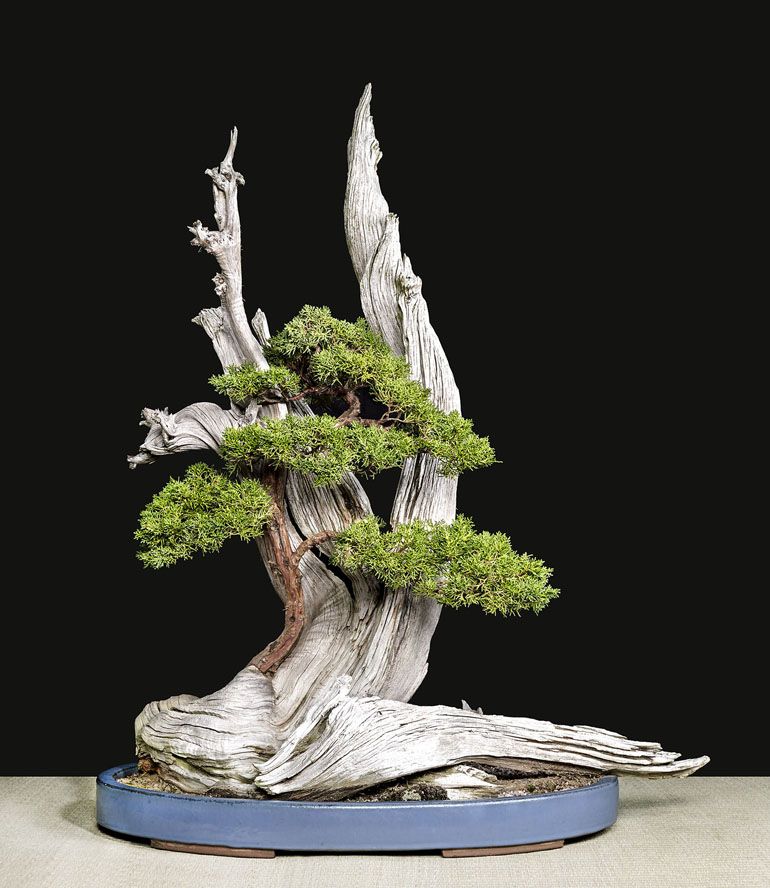 The European beech (Fagus sylvatica) is ideal for bonsai because of its smooth grey bark and broad, but small leaves.
The European beech (Fagus sylvatica) is ideal for bonsai because of its smooth grey bark and broad, but small leaves. You'll enjoy the tricolor beech tree (Fagus sylvatica 'Roseo-Marginata'/'Purpurea Tricolor') with its variegated leaves that may include many shades of green, pink, and white, with a color often edging the leaves, that create a dramatic bonsai.
Other beech tree options include the American beech (Fagus grandifolia) with large, but thin leaves that look breezy as a bonsai, and the Japanese white beech (Fagus crenata), in demand as bonsai for its smaller, thicker foliage.
- Light: Full sun to semi-shade
- Water: Water whenever the soil is dry
- Color varieties: Green, yellow, purple, pink, white, or red leaves, white or gray bark
-
14 of 16
Cliff / Wikimedia Commons / CC BY 2.0
Many fir (Abies) trees from the genus are often chosen for Christmas trees, and they make perfect bonsai specimens, as well.
 They are part of the pine tree family (Pinaceae) but fir trees deserve their own place on the bonsai map. One caveat: fir trees aren't always suited to container culture so they have to become acclimated.
They are part of the pine tree family (Pinaceae) but fir trees deserve their own place on the bonsai map. One caveat: fir trees aren't always suited to container culture so they have to become acclimated. A popular tree from this genus to bonsai is the Douglas fir (Pseudotsuga). The foliage is dense and the branches are well proportioned for bonsai. The younger branches on Douglas fir can be easy to train since they are very flexible versus older, breakable branches.
- Light: Full sun to partial shade
- Water: Does not like droughts or wetness, requiring water when the soil is just about dry
- Color varieties: Green or blueish-gray needle-like leaves
-
15 of 16
Sailko / Wikimedia Commons / CC BY-SA 4.0
Though the white oak tree (Quercus alba) grows to epic heights in the landscape, it can also make a handsome, sturdy bonsai specimen. Even as bonsai, it will have its signature gnarled, aged trunk and the propensity to live indefinitely.
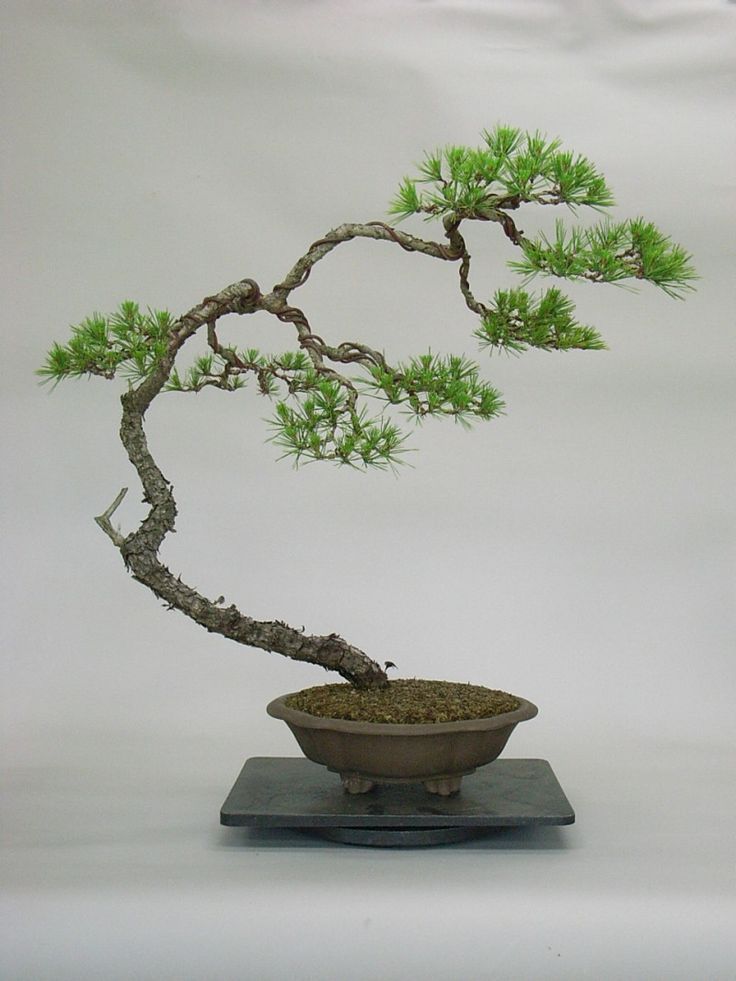
A white oak tree may not be too easy for beginner bonsai artists. Other types of oak trees make better bonsai trees to start, such as the English oak tree (Quercus robur). It's a perfect bonsai for autumn leaf peepers and you don't even have to leave home to see the changing fall colors.
- Light: Full sun
- Water: Deep, infrequent watering only when soil is dry
- Color varieties: Dullish green and shapely rounded lobed leaves with rough gray trunks
-
16 of 16
bullantmultimedia / Getty Images
Most flowering crabapple species make beautiful fragrant flowering and fruiting bonsai. They flower in the spring and produce small dangling round fruit in the fall. It's safe to taste the tiny apple fruit of your bonsai if you're tempted.
There are numerous ideal crabapple species for bonsai. Try ‘Sugar Tyme’ for its pinkish white flowers and profuse red fruit and weeping types like ‘Red Jade’ for its drooping form that bursts with white flowers.
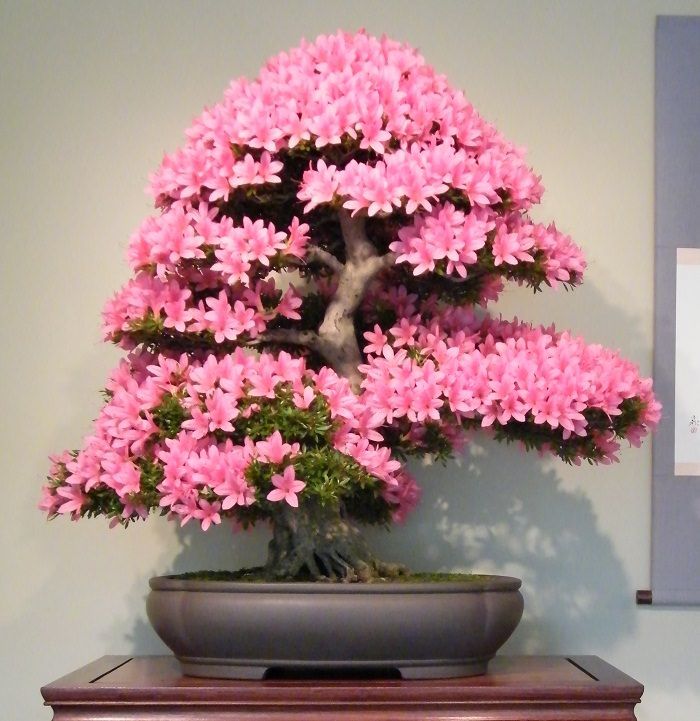
- Light: Full sun but not in direct, harsh heat
- Water: Frequent watering to keep moist, not soggy
- Color varieties: Oval serrated leaves come in greens to purples, with pink, red, or white flowers, and reddish to orange fruits
The Best Succulents
The Ten Greatest Bonsai Trees
Although bonsai cultivation as a hobby is now spread all over the world, its Asian origin is not disputed by anyone. It is not surprising, therefore, that the most impressive trees are in the collections of famous Japanese masters.
In this section we have brought together ten magnificent trees - unique in terms of their beauty, balance and realism. These trees will help you properly appreciate this ancient and fascinating art! The order in which these ten trees are presented has nothing to do with their importance.
(#1) 800-year-old bonsai from Mr. Kuno Kobayashi's Shunka-en Nursery
A remarkable tree famous for its extremely old age.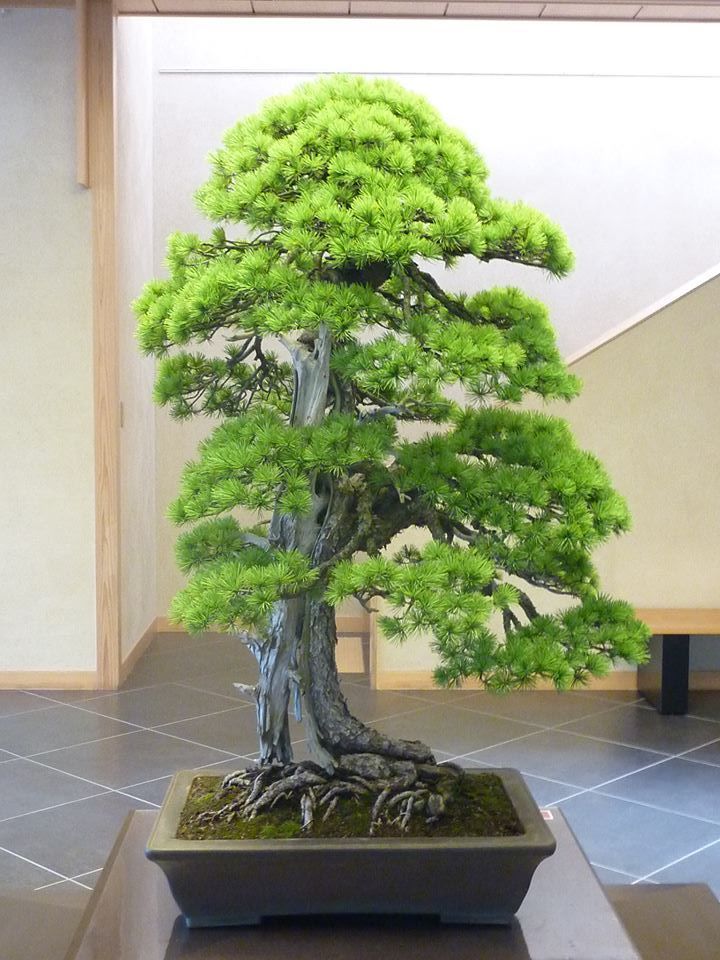 It is believed to be over 800 years old and one of the most expensive in the world. Its owner, Master Kobayashi, is one of the most famous bonsai artists in the world, having received the prestigious Japanese Prime Minister's Award four times. His kennel, Shunka-en, is located in Tokyo and is open to the public.
It is believed to be over 800 years old and one of the most expensive in the world. Its owner, Master Kobayashi, is one of the most famous bonsai artists in the world, having received the prestigious Japanese Prime Minister's Award four times. His kennel, Shunka-en, is located in Tokyo and is open to the public.
(#2) Goshin (Guardian of the Spirit) by John Naka
Goshin (Guardian of the Spirit) is a bonsai created by John Y. Naka. This is a composition in the form of a grove of eleven Chinese junipers (a subspecies of Foemin), the oldest of which Naka began to form back in 1948. In 1984, Naka donated this composition to the National Bonsai Foundation on the condition that it be exhibited in the US National Botanical Gardens (Washington), where it remains to this day.
(#3) Small bonsai (Shohin), author - Morten Ahlbeck
Gorgeous horizontal cotoneaster (Cotoneaster horisontalis). This picture was taken in the spring.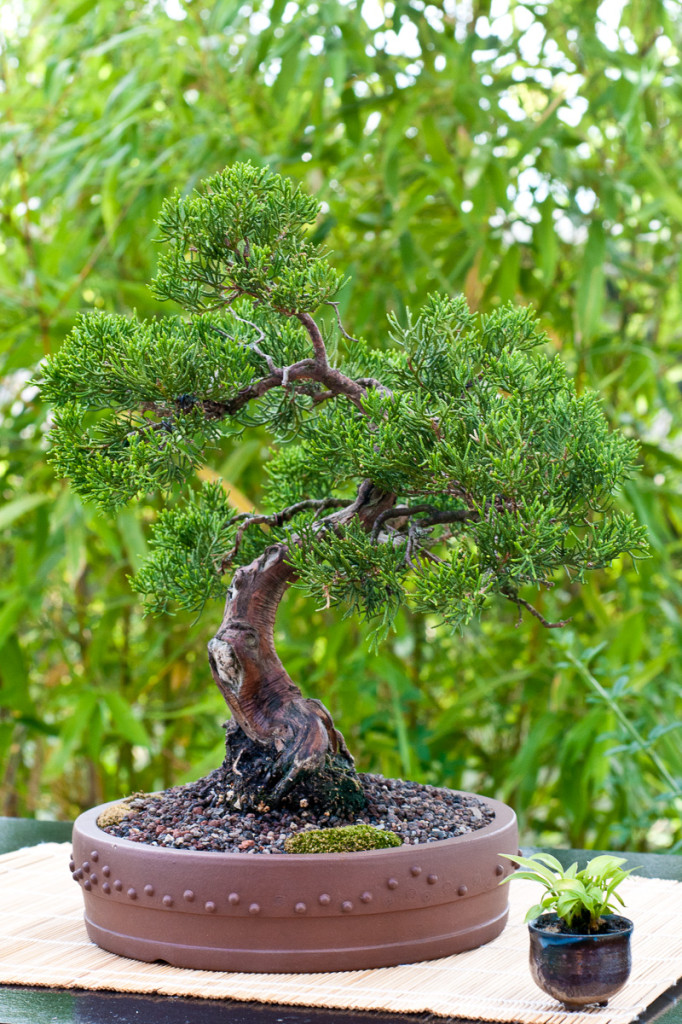 The tree blooms in summer and is adorned with small red berries in autumn and winter. The height of this bonsai is only 9.5 cm and it is planted on a miniature rock. The author of the container is the famous master John Pitt. At the time of this photo, the tree was about 20 years old and took approximately ten years to form.
The tree blooms in summer and is adorned with small red berries in autumn and winter. The height of this bonsai is only 9.5 cm and it is planted on a miniature rock. The author of the container is the famous master John Pitt. At the time of this photo, the tree was about 20 years old and took approximately ten years to form.
(#4) Scotch pine (Pinus silvestris) by Stefano Frisoni
This tree is amazingly realistic and highly valued in bonsai. As you can see, the crown fragments are very dense and resemble clouds in the sky!
(#5) Penchin Yi-Sun Wu Chinese Style Landscape
This is a wonderful Chinese landscape from the Man Lung Collection (Hong Kong), which uses sageretia (Sageretia theezans) together to form a very realistic landscape (in ficus bonsai are also widely represented in this collection). This composition, including trees, rocks and miniature figures, is placed in a flat rectangular marble tray, which, in turn, stands on an antique table.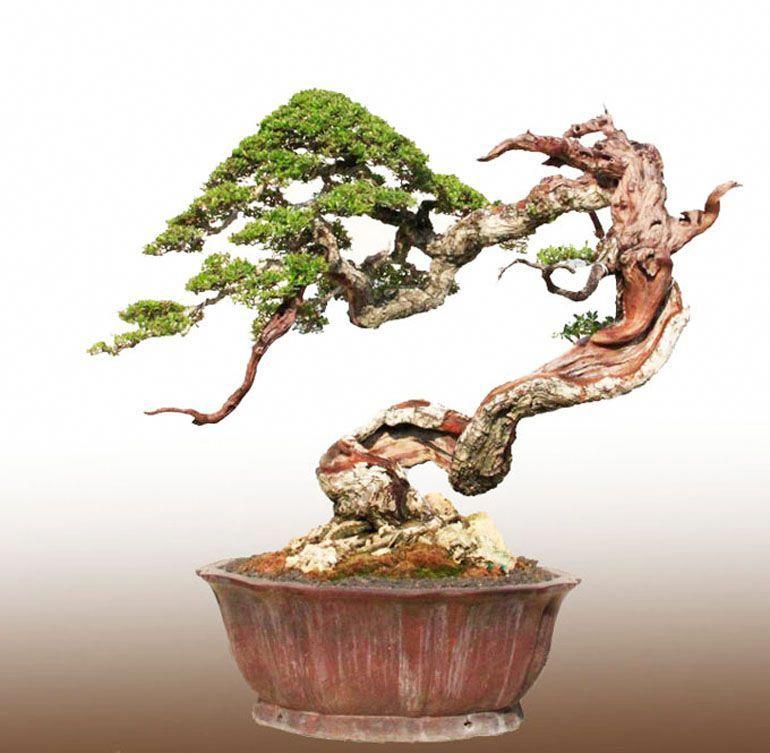
(#6) Blooming bonsai by Wolfgang Putz
This azalea tree is only 14 cm tall. The picture was taken in late spring - early summer, when azaleas bloom (not for long, but very brightly). The tree is planted in a Japanese container. We also have a section on the site with the 10 best flowering bonsai.
(#7) Brazilian rain tree by Badi Sulistio
This tree is grown from a small cutting and this photo shows the result of 12 years of work. The Brazilian rain tree, native to Central and South America, is considered one of the most beautiful tropical trees. It is very popular in bonsai.
(#8) Mini bonsai arrangement (mame) by Morten Ahlbeck
A bonsai arrangement (in this case, a small size mame) usually consists of a main tree, a painting scroll and an accent plant. Together, these objects create a strong image, often reflecting the beauty of the current season. See other images of small bonsai.
(#9) Walter Poll's famous bonsai - Japanese maple
One of the most famous trees in the collection of European bonsai artist Walter Poll. This tree is incredibly elegant and realistic, large in size (almost a meter high, the maximum for bonsai) and it is over a hundred years old. Without a doubt, this is a masterpiece created by an inspired artist! A photo of this tree is posted in our bonsai gallery.
(#10) Bonsai master Kimura
And last but not least, Sensei Kimura's bonsai. His collection of diverse trees is world renowned. Beginning at the age of 15, Kimura was a student of Master Hamano at the Omiya Bonsai Village. To see his captivating and sometimes unconventional work, we recommend visiting Master Kimura's bonsai garden!
65 photos and general rules for growing ornamental plants
Almost everyone knows about the existence of a miniature copy of a real tree called bonsai.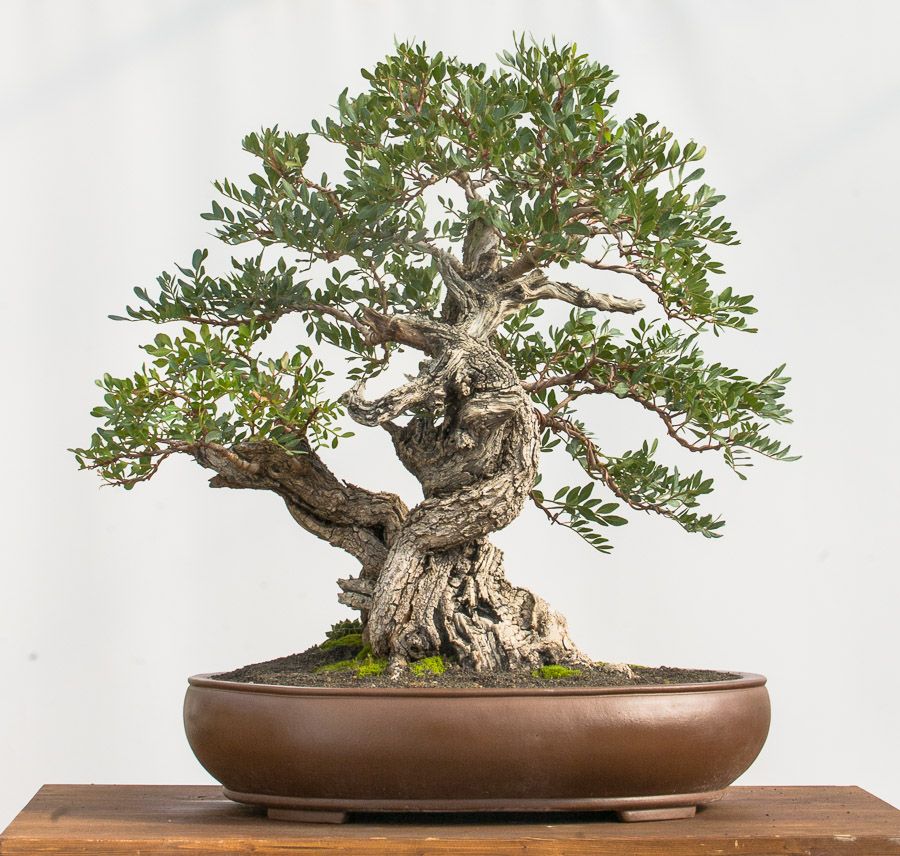 Everyone can plant and grow it with their own hands. It is important that the selected seedling take root in the climatic conditions surrounding it.
Everyone can plant and grow it with their own hands. It is important that the selected seedling take root in the climatic conditions surrounding it.
The cultivation process itself is very simple, but it requires constant monitoring of the formation of the crown and trunk, a lot of time and diligence. Caring for a mini tree must be correct.
The main thing is the observance of conditions favorable for the proper development of the plant, which is possible with balanced lighting, moisture, temperature, watering and fertilizing the soil. In the photo you can see many options for a bonsai tree.
Brief content of the article:
Perspective into the historical past
Most bonsai growing experts are sure that its roots grow from the land of the rising sun - Japan. Although the true origin of an ornamental mini plant, or rather the art of its creation, is from China even before our era.
A few centuries later, the Japanese picked up this work, while bringing it a little to perfection.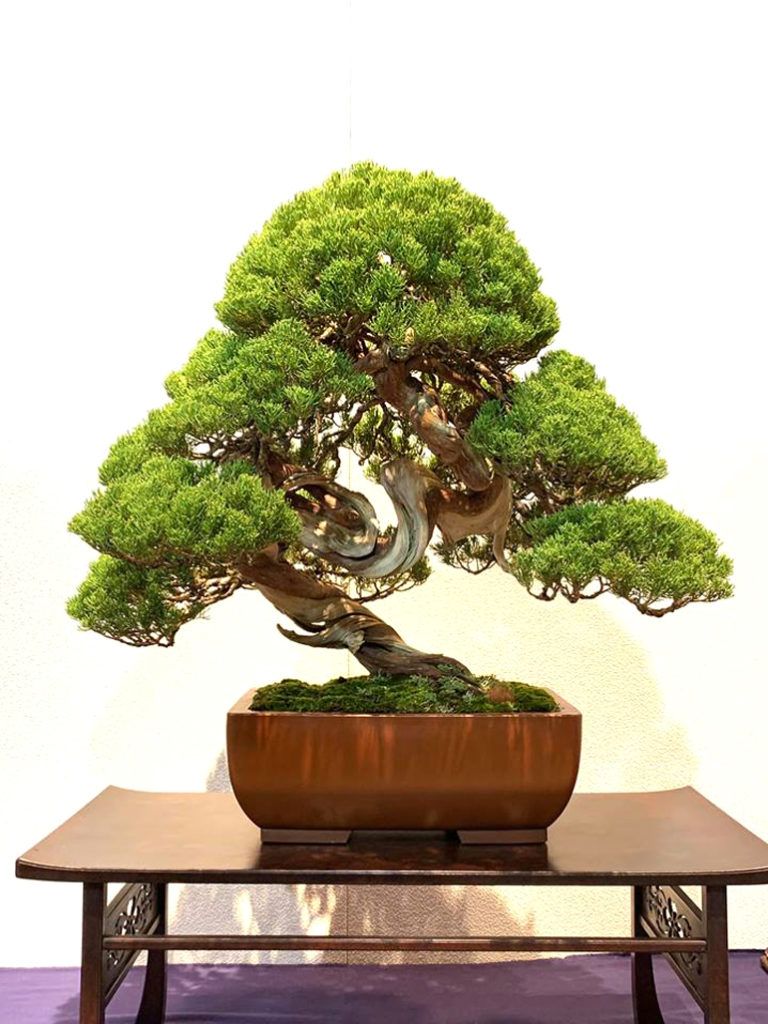 This is where its active distribution around the world began, which is why art is considered Japanese. From Japanese, the name is translated as a tree in a saucer.
This is where its active distribution around the world began, which is why art is considered Japanese. From Japanese, the name is translated as a tree in a saucer.
The traditional type of bonsai has the following features:
- strong stem;
- at the base of a particularly pronounced system of rhizomes;
- clear and demarcated outline of the branching part;
- branches and trunk visible through foliage;
- perfect resemblance to the original.
The symbolism of the plant
To create a plant does not require a huge space, as evidenced by the name of the plant - "a tree on a saucer." But patience, diligence and diligence are very necessary. After all, not everyone is able to cope with the process of long-term cultivation.
But those who manage and grow a worthy mini copy of a tree should know that this is not only an ornamental plant, but also symbolizing: wisdom and justice, endurance and goodwill.
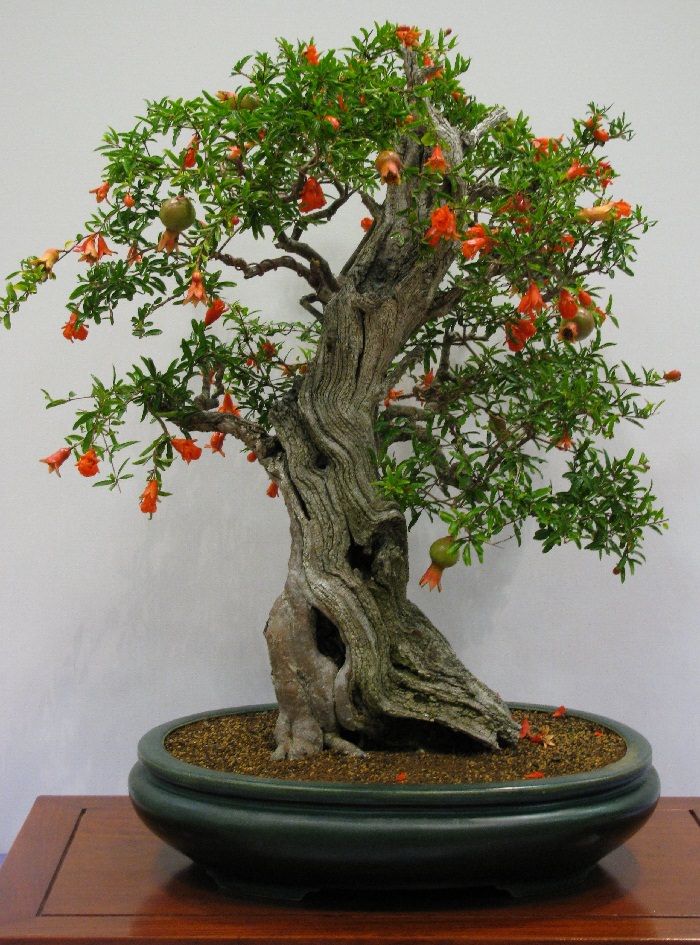
Bonsai cannot be called a simple occupation, because it is a full-fledged art that requires special human qualities: patience, diligence and effort. Due to their longevity, they can sometimes reflect entire historical eras.
At the same time, care and appearance will tell everything without words due to damaged bark, branches and huge rhizomes. For example, in Japan there are specimens that have been growing for more than a millennium.
Miniature conifers, symbolizing eternity, are considered the most valuable when compared with deciduous species that shed their leaves every autumn.
Varieties of mini trees
There are a lot of original trees from which you can create mini copies, but conifers are more popular. Due to their durability and hardiness, in addition, they have small leaves that remain green throughout the year.
The main varieties are:
- evergreen species;
- with spring flowering;
- blooming in summer;
- with flowering in autumn;
- with a well-defined shape of the trunk and branches, especially when falling leaves.
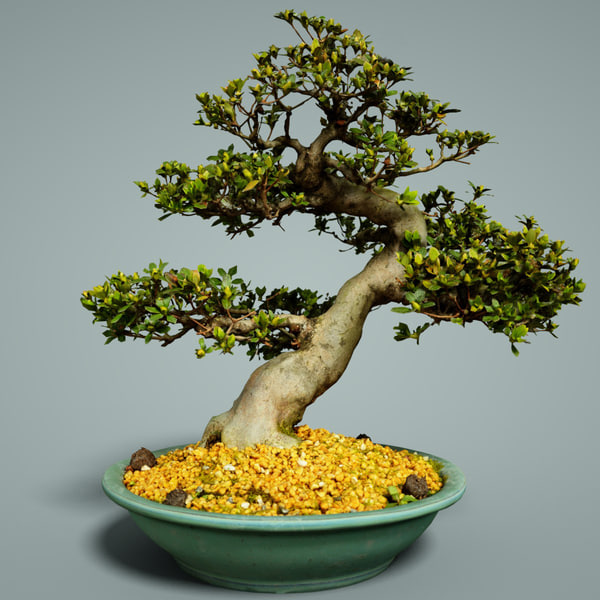
The Japanese bonsai tree is not recommended for growing indoors as it does not like hot dry climates. Therefore, after a few days of indoor maintenance, the plant may get sick. When placing a tree on the street, it should be remembered that it needs protection from sunlight, rain and winds.
Bonsai plant selection
If you decide to grow bonsai yourself, then when choosing a particular type of plant, you need to take into account the climatic conditions of your region. It is better to give preference to local specimens: juniper, pine, lilac, etc.
You can create a miniature copy of a tree with your own hands using any plant seeds that do not require special care.
Increased attention and demand goes to wisteria, which is a tree with branches covered with small flowers. It can grow indoors as a house bonsai tree. The apple tree for bonsai is also good, besides the beautiful appearance, it can bear fruit.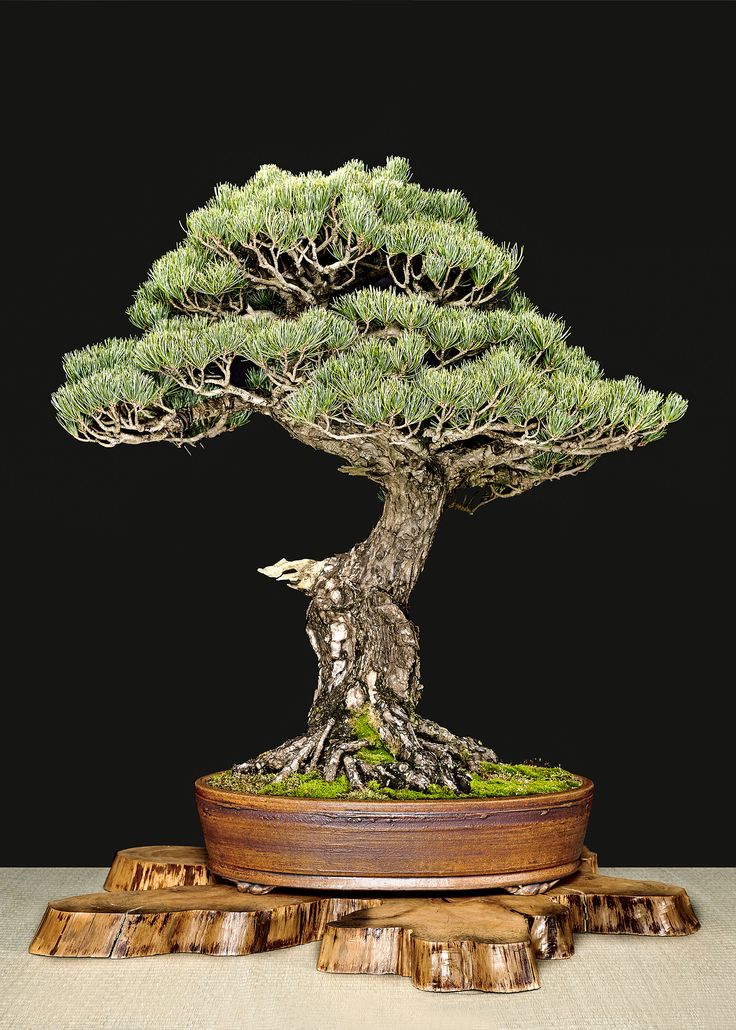
Popular species and management rules
Different (coniferous and deciduous) plants are suitable for cultivation, but the most in demand:
- European olive. It is an evergreen shrub that blooms every year. Likes: climate at temperatures from + 5 to + 18 degrees, sufficient lighting, fresh climate, clay and sand soil, moderate watering.
- Carmona or tea tree. Evergreen tree growing up to 10 meters. Likes: warm climate and lighting.
- Chinese elm (small-leaved). Ideal for beginners in this business. Likes: heat, sun and moisture.
- Mix. Consists of plants of different species, does not require special care.
It is very easy to grow a mini flower or bonsai on your own, using plants adapted to the local climate (pine, oak, juniper, etc.).
Care does not require special conditions or skills. For germination, you can use seeds or prepared seedlings taken from the forest.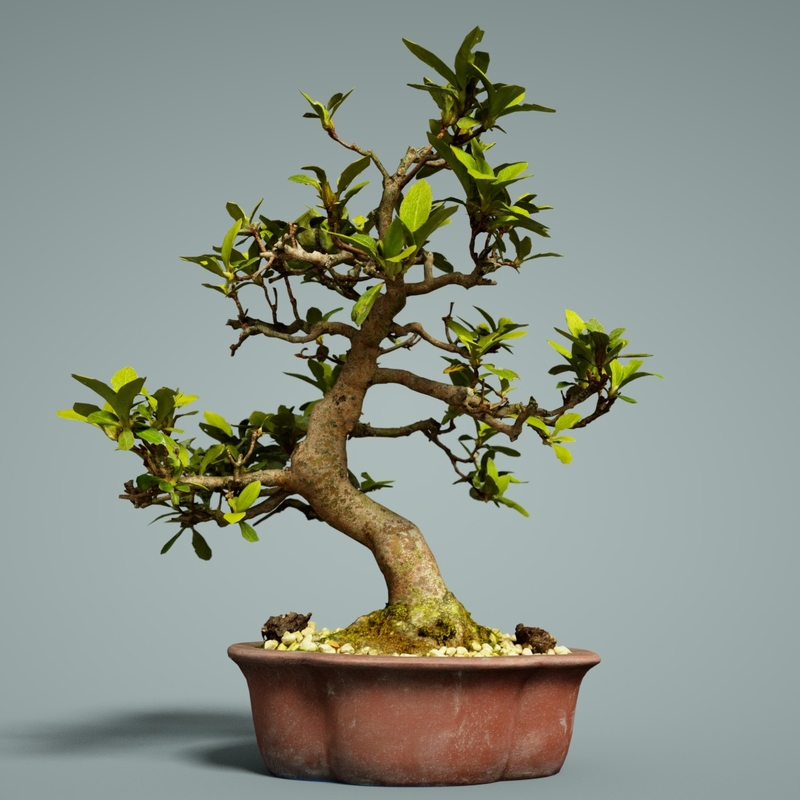
How to grow a bonsai tree
To grow a bonsai, it is enough to observe the following conditions:
- take care of the seed for quite a long time, sometimes for several years.
- take care of the sprout. Provide regular ventilation. If there are 4 leaves, it is necessary to dive, and after 2 months to feed with fertilizer. Before wintering, rearrange closer to the window and do not feed.
- take care of the mini tree. Provide optimum light and spray. After a few years, the formation process should begin.
Tree care
Maintenance features include the following steps:
- timely pruning of the crown,
- preparation of a special soil mixture containing clay, sand, humus and humus,
- compliance with the optimal temperature in the range from 10 to 18 degrees Celsius,
- absolute exclusion of through winds,
- avoid direct sun exposure,
- moderate watering.

Learn more
- Stainless steel rust spots
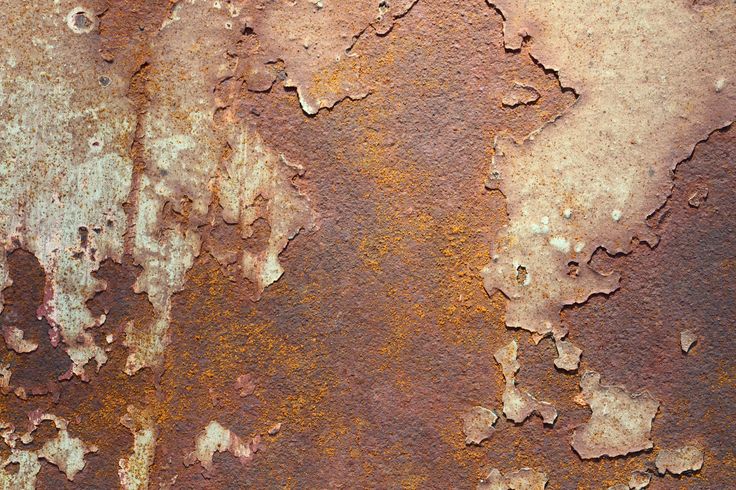
- Can i grow cilantro in a pot
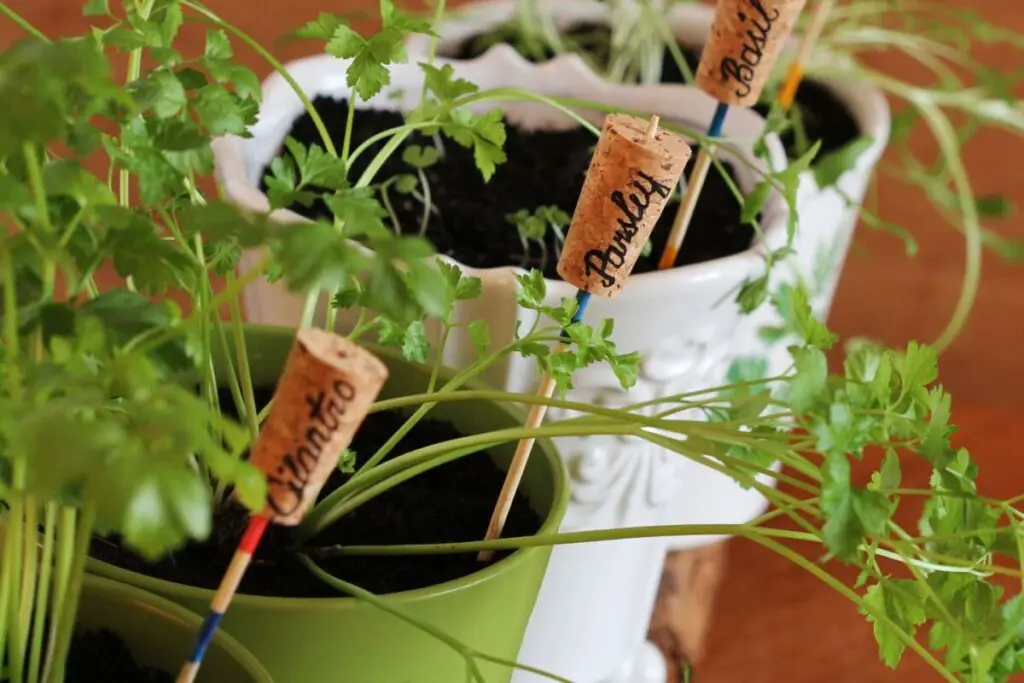
- Where to buy evergreen trees
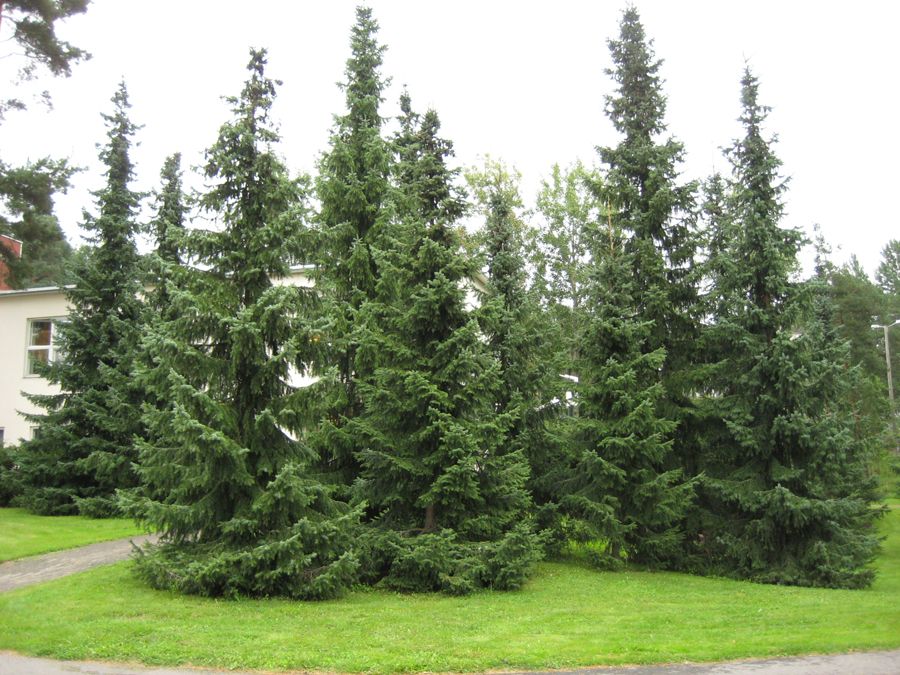
- House and home carpets

- Poison ivy killer homemade
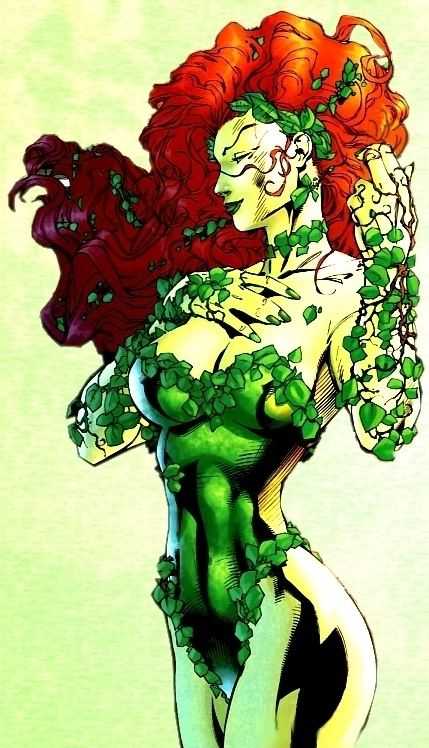
- When should i plant spinach
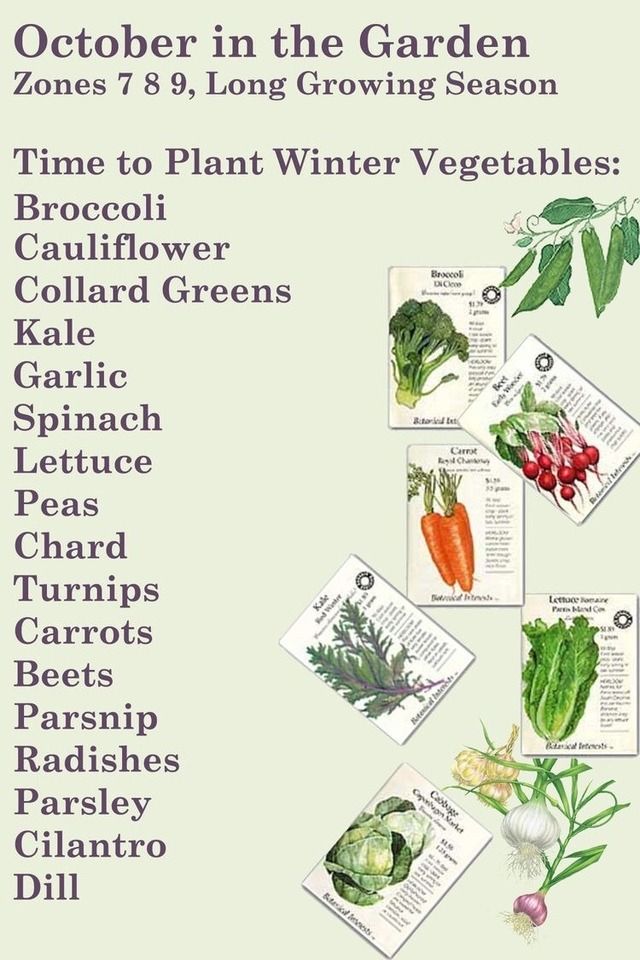
- Setting for washing towels
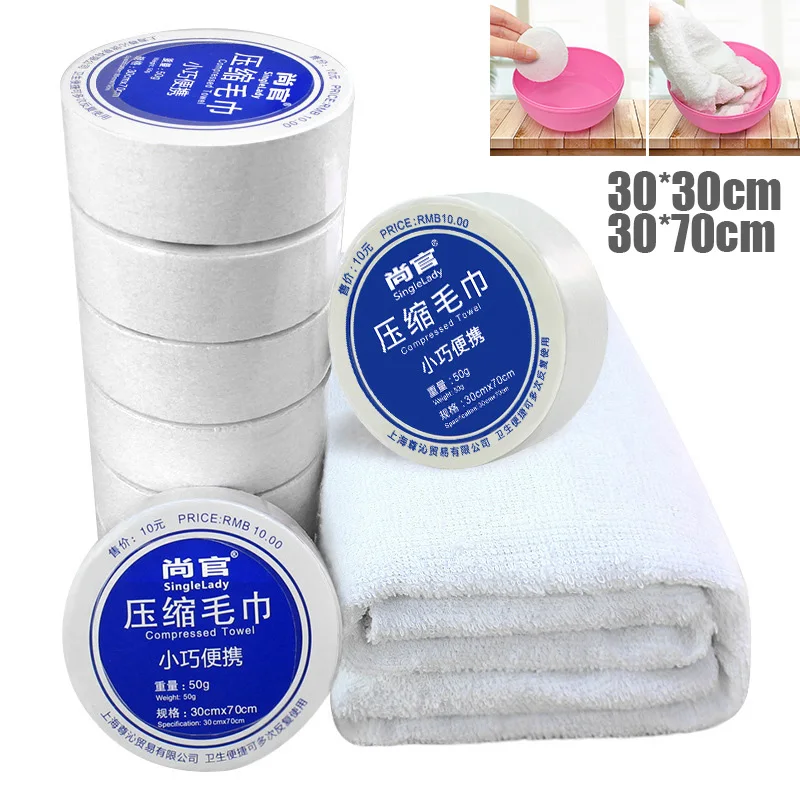
- Family rooms with tv

- Insect repellent for the home

- Color for front door feng shui
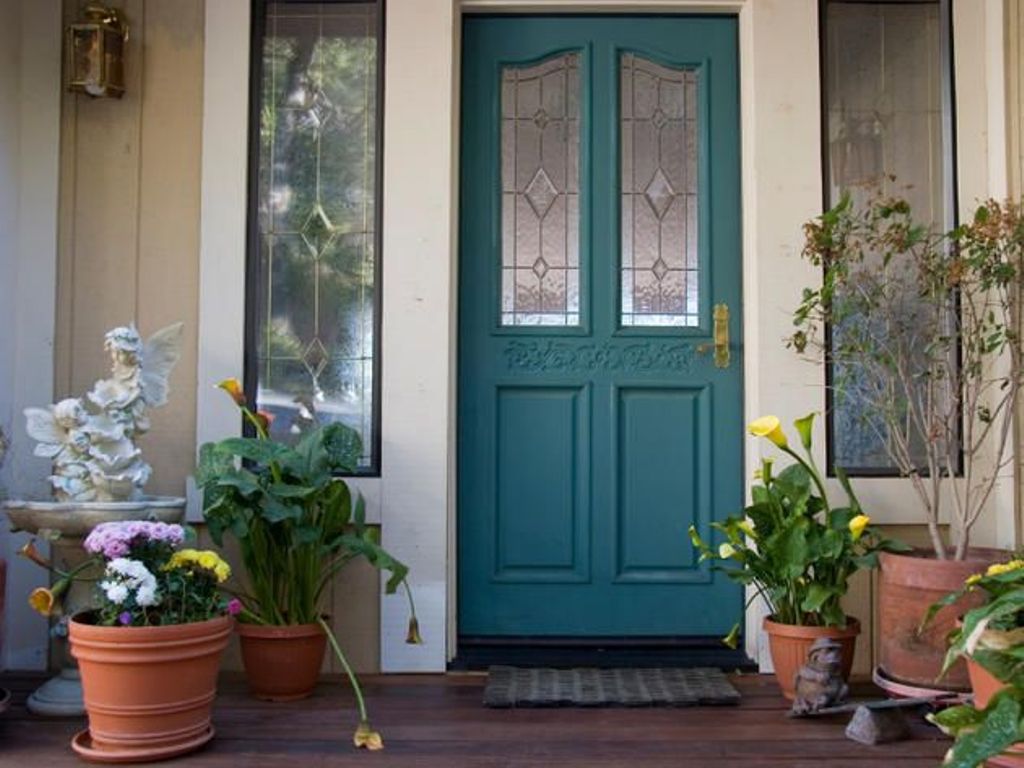
- Best lawn trees
